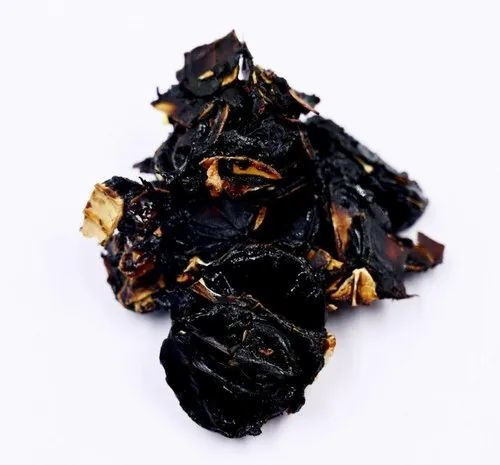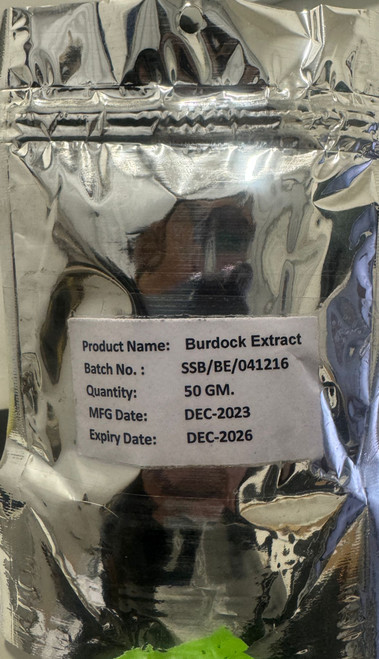What Is Amaltas?
Amaltas is a miraculous herb that is of deciduous origin. It is usually medium-sized growing to a height of 25 cm. It has alternate smooth, ovate-shaped, hairy, pinnate, leaves, with 4-8 leaflets on either side, fruits in the form of pendulous, cylindrical, indehiscent pods bearing 20-25 shiny black, seeds. The fruit pods are mainly green when ripe and darn brown when they reach maturity, whereas the flowers are usually bright yellow pentamerous and slightly zygomorphic in shape and occur in bunches. The plant usually prefers a deep, well-drained, moderately fertile sandy loamy soil, but can also grow on calcareous, red, and volcanic soils. The plant is usually found growing in the rain forest, seasonally dry forest, woodland, riverine, gallery forest, wooded grassland, on dry scrub, thickets and coastal areas, low altitudes, gardens, parks, and even on urban lands.
The plant which goes by the botanical name Cassia fistula is chiefly indigenous to India and Pakistan but is also widely disturbed in various parts of South-east Asia, Thailand, China, South Africa, Costa Rica, Guyana, and are also naturalized in many tropical parts including Mexico, Ecuador, West Indies, Belize, Australia, and Brazil. Owing to the vibrant yellow flowers, the Amaltas flower is designated as the national flower of Thailand and the state national flower of Kerala.
Being a powerful Ayurvedic herb, amaltas is widely used in almost all ayurvedic formulations that are directed towards boosting overall immunity. Apart from alleviating different types of infections, the ornamental herb also provides a traditional remedy for boosting digestion, improving metabolism, improving cardiac functions, remedying digestive troubles and treating wounds. Be it blood disorders, skin diseases, loss of appetite, urinary anomalies, gout or constipation, this extremely powerful herb provides a striking remedy for all.
Common Names Of Amaltas
The herb is known by different parts of the world. Few of the common names include Golden Shower, Golden Chain Tree, Pudding Pipe Tree, Indian Laburnum, Purging Cassia, Cassia Fistula, Ai-Kadus, Alash, Ali, Bereska, Cana Pistula, Chaiya-Pruek, Riechpuhs, Golden Rain Tree, Golden Rain, Kiar, Kirwara, Guolong Liang, Kakke, Khuun, Koon, Phung-Ril.
Ayurveda knows this plant by the names which are Amaltas, Aragvadha, Amultas, Bahava, Garmalo, Chaturangula, Rajvraksha, Rajbrikh, Rajah Kayu, Sarakkondrai, Sonaru, Sundali, Trengguli.
In the Indian subcontinent, it is chiefly known as Amaltas or Aragvadha in Sanskrit, Bandarlauri, Bandarlathi, Bendra lathi, Bharva, Dhanbaher, Girimalah, Girimaloah, Rajataru, Suvarnaka in Hindi, Aragvadhamu, Raela, Relu in Telugu, Appai, Konnai, Konrai, Konrai ventan, Kontai, Tiru, Tiruk-kontai in Tamil and Amaltas, Amultas, Sondal, Sonalu, Desi asal, Shonalu, Sonali, in Bengali.
Ayurvedic Indications Of Amaltas
The holistic science of Ayurveda knows this ornamental herb as Aragvadha or Amaltas. Time and again, this effective herb has been mentioned in several ayurvedic scriptures and journals for various indications which include Deepana (enhances stomach fire), Pachana (helps in digestion), Rochana (stimulates appetite), Anulomana (improves breathing), Vamana (prevents nausea and vomiting), Jvara (useful in fever), Kasahara (Relieves cough), Amahara (treats indigestion), Dahahara (relieves burning sensation), Mehahara (treats urinary tract disorders), Prameha (manages diabetes), Vayasthapana (prevents ageing), Shwasha (relieves breathing difficulties), Trutahara (relieves excessive thirst), Balya (improves muscle strength), Hikkanigrahana (controls hiccups), Kantya (relieves sore throat), Triptighno (relieves pseudo-satiation), and Vamanopaga (treats emesis) Shonitasthapana (prevents bleeding), Sangrahini (treats diarrhoea), Kustha (treats skin disorders), Kamala (prevents jaundice), Raktadoshahara (blood purifying), Vran Ropana (heals wounds), Varnya (improves complexion), Krimihara (relieves intestinal worms), Hridaya (treats heart problems), Kanthya (improves voice), Arsha (treats piles), and Krichra (treats painful micturition).
What Are The Chemical Components Of Amaltas?
Amaltas comprises an array of bioactive constituents including Glycosides, Anthraquinones, Fistulic Acid, Sennosides, Sugars, Saccharose, Mucilage, Pectin, Anthraquinones, Rhein, Rheinglucoside, Sennosides A And B, Emodin, Chrysophanic Acid, Phlobaphenes, Fistuacacidin, Lupeol, and Sterols like Beta-Sitosterol And Hexacosanol.
Parts Of Amaltas Used In Medicinal Formulations
Each part of this wonder plant has therapeutic as well as curative value. The fruit pulp is used for both medicinal purposes and to heal wounds. The leaves being an integral component is used for the preparation of ointments, creams, and poultices. The bark has potent astringent-like properties and used for relieving inflammatory conditions whereas the wood is extremely durable and used in the manufacturing and furniture industries. The bright yellow flowers are considered sacred in the Hindu culture and are often used for worshipping Lord Vishnu in several regions in the Indian sub-continent.
Culinary Uses Of Amaltas
The young leaves and flower buds of amaltas can be cooked in the form of a stew. The tender leaves, when taken as a soup, is good for digestion. The astringent property of the bark is used in betel paste, whereas the pulp of the plant parts can be used as a spice and added to enhance the taste of various cuisines.
Formulations Of Amaltas
Aragwadharishtam
Aragwadharishtam is an ayurvedic herbal decoction falling under the Arishta Varga that uses the natural fermentation process for preparation. This herbal tonic imbued with Amaltas or Aragvadha and many other herbal ingredients is extremely beneficial for treating skin diseases, intestinal worms, vitiligo (leucoderma), cough and cold. It is also used to heal wounds, purify the blood, and eliminate harmful AMA doshas from the body.
Ingredients:
Aragvadha (Amaltas) – Cassia fistula
Amalaki (Amla) – Emblica officinalis
Harad (Haritaki) – Terminalia chebula
Vaividang (False Black Pepper) – Embelia ribes
Nishoth (Trivrit or Turpeth) – Operculina turpethum
Kali Mirch (Black Pepper) – Piper nigrum
Elaichi (Cardamom) – Elettaria cardamomum
Laung (Clove) – Syzygium aromaticum
Guda (Gur) – Jaggery
Madhu - Honey
Method Of Preparation Of Aragwadharishtam:
Wash and sun-dry the main ingredient amaltas
Powder and sieve the dried amaltas powder to remove impurities and solid particles.
Separately, clean, dry, powder and sieve the other herbs and keep it aside.
Immerse the powdered amaltas in a specific quantity of water and soak it overnight.
In the morning, boil the decoction and reduce it to ¼ quantity.
Pass the clear decoction through a muslin cloth to eliminate impurities.
Add jaggery to the clear decoction, stir it properly and filter to remove solid particles.
Now, pour the decoction in a wide-mouthed vessel, add the powdered aromatic herbs to the filtrate and seal the opening of the container.
Keep it aside in the fermentation room and allow it to ferment.
Check on the fermentation process without touching or disturbing the vessel.
Once the fermentation is complete, filter the fermented liquid through a muslin cloth to eradicate solid particles and impurities.
Pour the concoction in air-tight containers, and store it in a cool, dry place for enhancing maturation.
Dosage Of Aragwadharishtam
Adults: 10-25 ml
Children: 5-10 ml
It can be taken twice a day by infusing it in water preferably after meals.
Amaltas Perfume
The vibrant hanging flowers of Amaltas are not only used for ornamental purposes to decorate your homes but also the aroma of the flowers can be made into perfumes to use it as a normal body perfume or in potpourri to instil the invigorating aroma in your abode.
Use this easy recipe to make an alluring perfume using the aromatic Amaltas blooms right at home:









